Impact of Social, Cultural, and Religious Practices on Day-to-Day Life of Citizens in India, Large Developing & Developed Countries
Introduction
In every society, daily life is not just structured around economics or governance but deeply influenced by the underlying fabric of social, cultural, and religious practices. These dimensions shape the way people interact, work, rest, celebrate, and even protest. India, known for its deep-rooted traditions, vibrant culture, and religious diversity, presents a highly engaged social milieu. Similar patterns—though with different intensities—are seen in other large developing nations like Brazil, Indonesia, and Nigeria, and to a lesser degree in developed nations like the United States, France, and Japan.
This article explores the extent and ways in which these practices impact the everyday life of common citizens, from household routines to public infrastructure management. It also compares India with select large developing and developed economies, identifying unique challenges, civic disruptions, and global lessons.
1. Social Norms and Community Life
India
Indian society places strong emphasis on collectivism. Joint families, community obligations, caste affiliations, and social rituals influence behaviour across age groups.
- Daily Impact:
- Family and social expectations influence decisions from marriage to career.
- Peer pressure around rituals, dowries, or caste customs causes emotional and financial strain.
- Festivals and social occasions often override personal or professional obligations.
Developing Nations
- Brazil, Nigeria, Indonesia: Extended families play central roles. Community identities, religious affiliations, and local traditions guide decisions around marriage, parenting, and conflict resolution.
- Daily Impact:
- Informal networks act as support systems.
- Local norms dominate over written rules in daily behaviour and governance.
Developed Nations
- USA, Germany, Japan: Societies prioritize individualism. Relationships are often more transactional and less hierarchical.
- Daily Impact:
- More autonomy in personal choices.
- Less social pressure but more reliance on state services for healthcare, elder care, etc.
2. Cultural Practices and Public Life
India
Culture is integrated into everyday behaviour—from traditional attire and language to social etiquette.
- Daily Impact:
- Clothing choices and language differ significantly by region.
- Rituals like lighting lamps, touching elders’ feet, or eating with hands continue in urban India.
- Bollywood and regional cinema heavily influence fashion, music, and aspirations.
Developing Nations
- Cultural practices influence regional cuisines, home design, folk art, music, and community gatherings. For example, Carnival in Brazil is a cultural landmark.
Developed Nations
- While less visible in daily routines, culture manifests in food, architecture, festivals, and social behaviour (e.g., punctuality in Germany or bowing in Japan).
3. Religious Beliefs and Practices
India
India’s religious calendar dominates public life. Public holidays span multiple faiths—Hinduism, Islam, Christianity, Sikhism, Jainism, and Buddhism.
- Daily Impact:
- Dietary restrictions (vegetarianism, fasting) influence work, school lunches, and public menus.
- Early morning temple/mosque visits, Vastu practices, or daily prayers affect morning routines.
- Astrology influences weddings, investments, and even election dates.
Developing Nations
- Indonesia follows Islamic principles in many public behaviours, including working hours during Ramadan.
- Nigeria sees co-existence of Islam, Christianity, and indigenous beliefs that guide behaviour in different regions.
Developed Nations
- Religious influence has declined in everyday life but persists in customs like Sunday closures (Germany), Christmas holidays, and prayers at public events in the U.S.
4. Impact of Festivals, Processions, Exhibitions, and Religious Gatherings
Across all societies—but especially in India and many developing nations—social and religious events can cause disruptions and civic strains, even as they serve cultural and emotional purposes.
India
- Festivals and Public Disruptions:
- Ganesh Chaturthi, Durga Puja, Holi, Diwali, Eid, and Christian festivals often involve large processions, loudspeakers, and road-blocking celebrations.
- Political rallies, spiritual fairs (Kumbh Mela), and temple anniversaries regularly spill onto public roads, parks, and stadiums.
- Impacts on Daily Life:
- Loss of Working Hours: Office closures or delayed attendance due to blocked roads and diversions.
- Traffic Congestion: Gridlocks during processions, especially in metro cities like Mumbai, Delhi, and Kolkata.
- Loud Noise: High decibel music, drums, and microphones affect students, hospitals, and elderly.
- Diversion of Civic Forces: Municipal and police resources are overextended, impacting normal law enforcement and sanitation duties.
- Business Disruption: Shops either benefit from festive shopping or suffer due to restricted access.
| Event Type | Average Disruption in Metro Cities |
| Large Festival Processions | 4–6 hours of congestion/day |
| Road Exhibitions (book fairs, trade shows) | 2–3 days of traffic rerouting |
| Political/Religious Rallies | Entire zones cordoned off for 1–2 days |
Developing Countries
- Brazil’s Carnival: City-wide celebrations cause closure of shops and offices, though these are economically offset by tourism revenues.
- Indonesia: Ramadan fasting alters office timings and school hours. Public prayer gatherings block traffic, requiring coordinated policing.
Developed Countries
- Events like Thanksgiving Parades (USA), Oktoberfest (Germany), or New Year celebrations cause temporary disruptions but are usually well-regulated.
- Noise levels, traffic management, and permit-based public gatherings ensure lesser impact on working citizens.
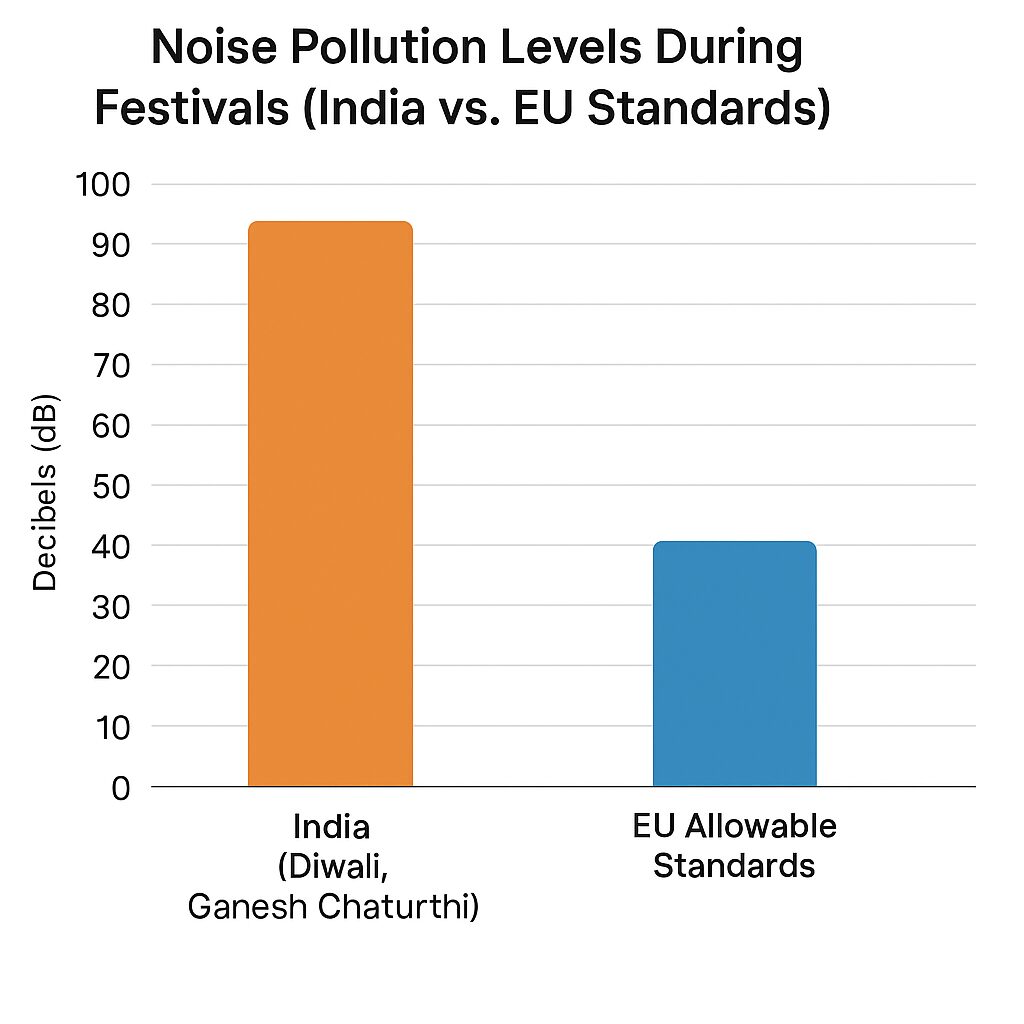
5. Gender Norms and Role Assignments
India
- Patriarchal structures restrict women’s roles in many families, especially in rural India.
- Women’s safety concerns limit participation in nighttime cultural events.
Developing Countries
- Traditional gender roles are common, but increasing urbanization and education are shifting norms.
Developed Countries
- Legal and social support systems allow more flexibility in roles. Gender-neutral parenting and shared household duties are common.
6. Education, Work, and Public Infrastructure
India
- School Closures: Local festivals result in frequent school holidays (up to 30+ days annually in some states).
- Workplace Absenteeism: Weddings, rituals, and fasting can reduce attendance and productivity.
- Infrastructure Strain: Parks used for events become inaccessible or degraded.
Developing Countries
- Religious and social holidays impact attendance, especially in the informal sector.
- Infrastructure is often not designed to handle large informal events.
Developed Countries
- Events are predictable, regulated, and involve public-private coordination. There is minimal impact on regular schooling or work schedules.
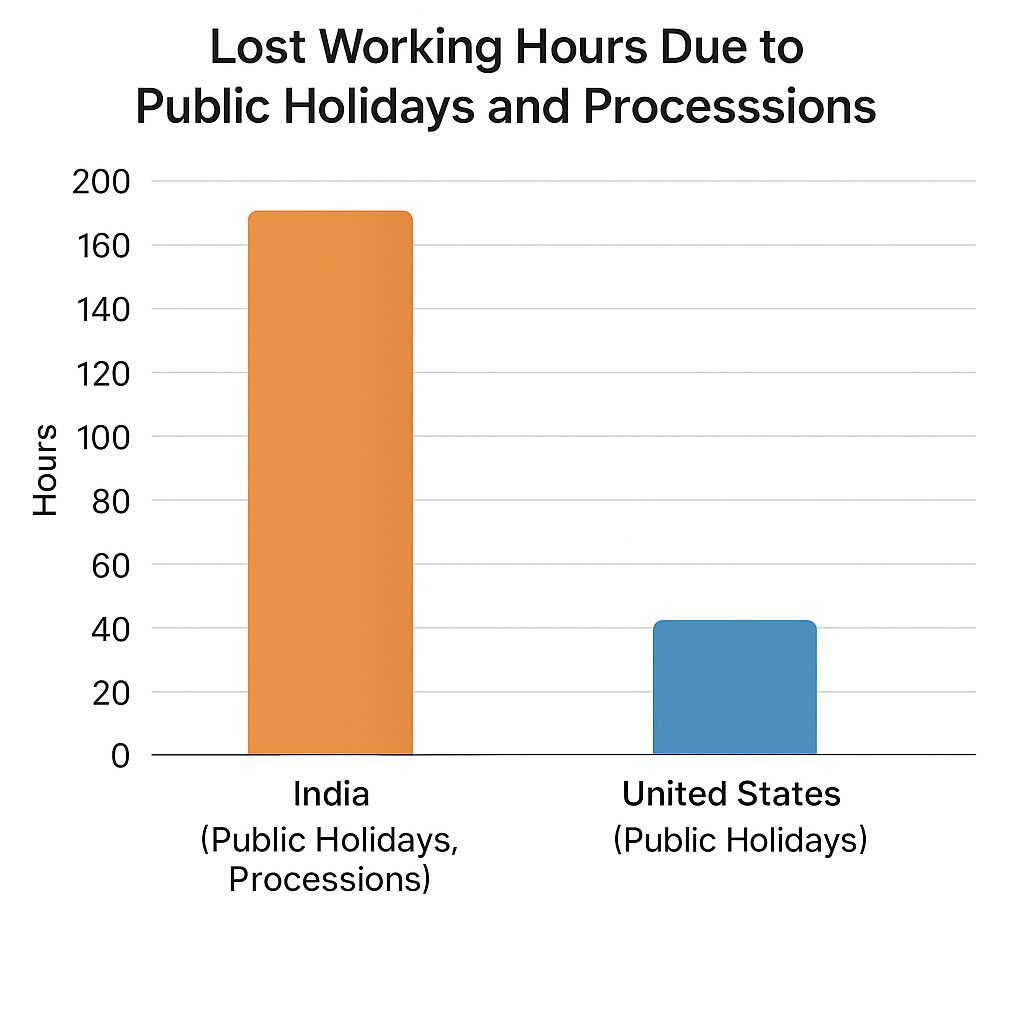
7. Marriage, Birth & Death Practices
- In India and developing nations, these are elaborate, extended, and community-centric events. Noise, food waste, and public road closures are common during wedding processions or funeral gatherings.
- Developed nations typically have more institutionalized, streamlined practices, often restricted to indoor venues and private spaces.
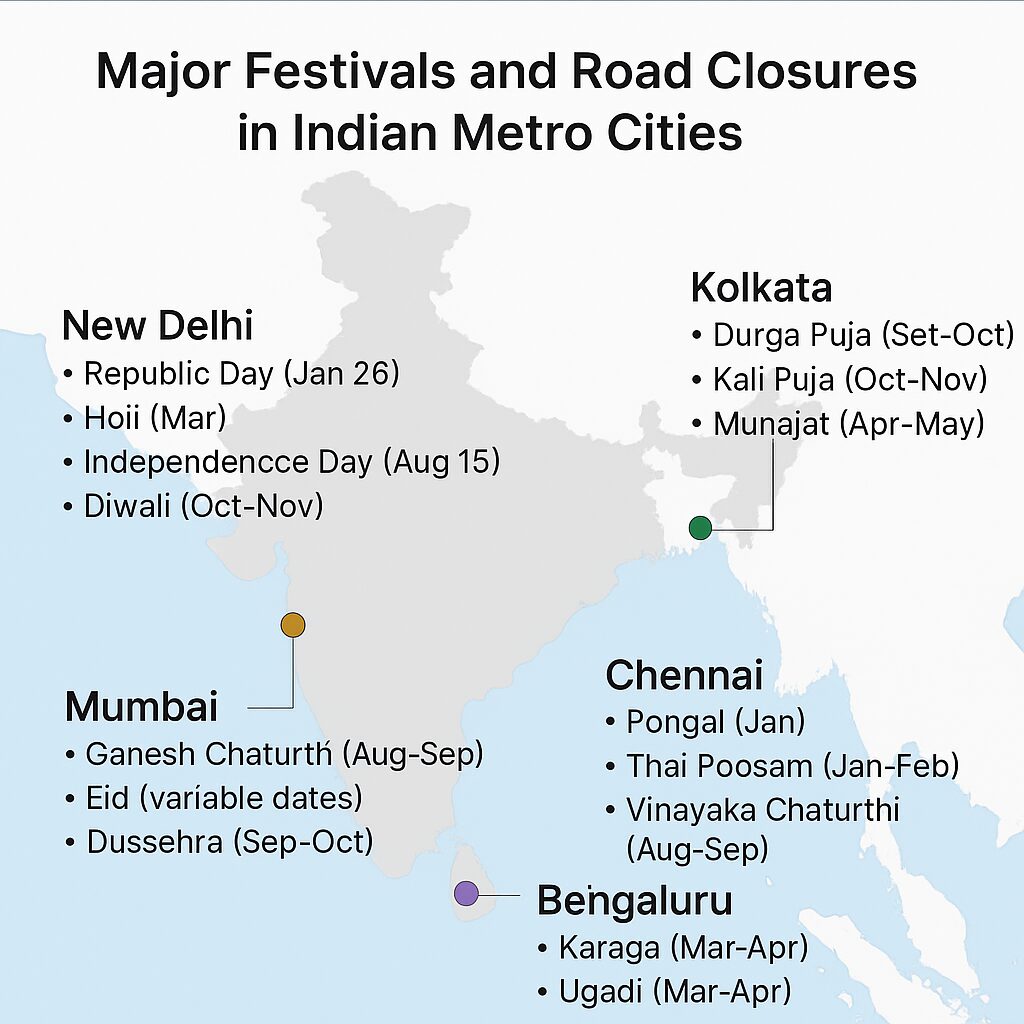
8. Civic Behaviour and Etiquette
| Feature | India & Developing Nations | Developed Nations |
| Waste after events | Often unmanaged, garbage in public spaces | Strict cleanup norms and fines |
| Use of Loudspeakers | Common during festivals, weddings | Regulated with decibel limits |
| Civic permissions | Often informal or waived | Strict licensing and crowd control |
| Traffic management | Reactive and ad hoc | Proactive and tech-enabled |
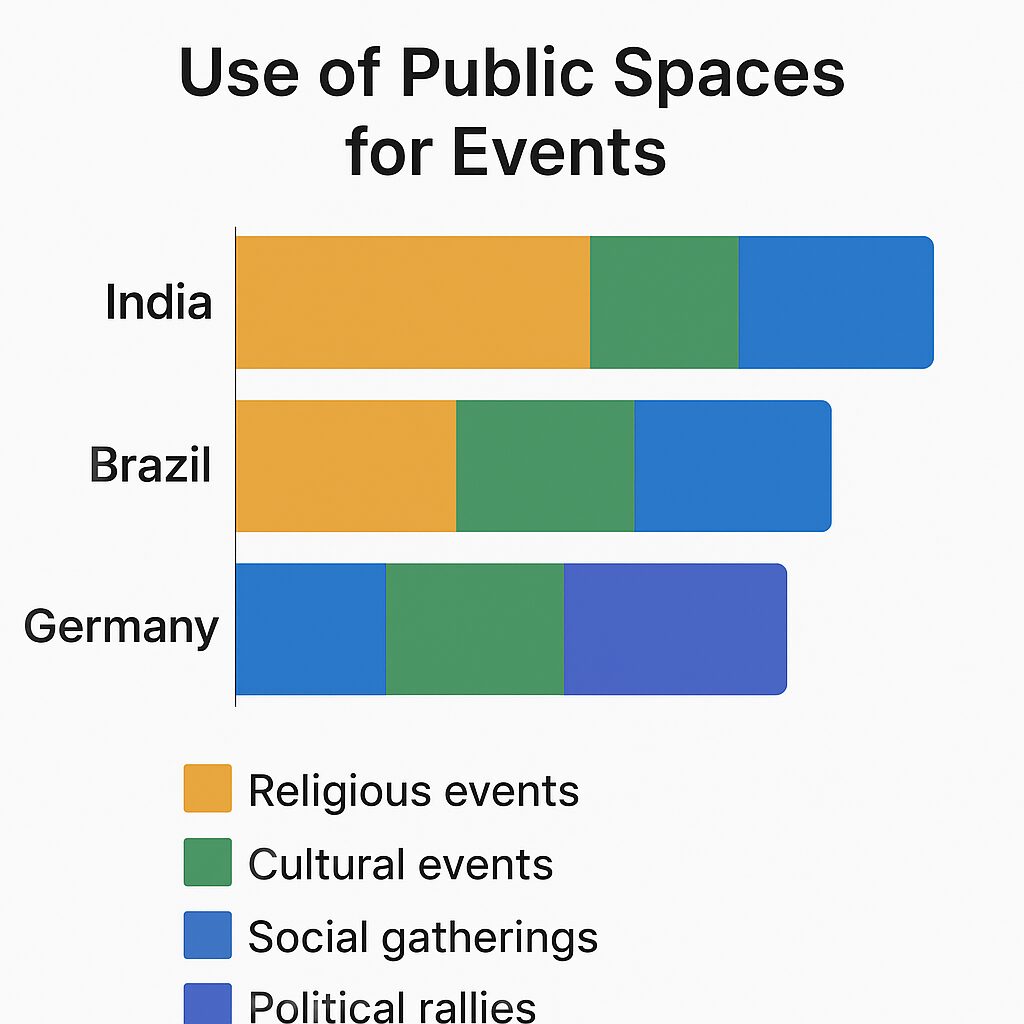
9. Globalisation and Hybridisation of Culture
- Yoga from India, Carnival from Brazil, K-pop from South Korea, and Hollywood culture from the U.S. have all crossed borders, blending with or replacing local traditions.
- Younger populations globally are creating hybrid rituals, combining local traditions with global expressions—e.g., destination weddings with traditional rituals, or online streaming of religious events.
10. Summary of Key Impacts on Day-to-Day Life
| Parameter | India | Developing Countries | Developed Countries |
| Festival-Linked Holidays | Frequent and long | Moderate | Predictable and fewer |
| Traffic Disruptions | High, often unplanned | Moderate | Low, well-managed |
| Loud Noise and Public Disturbances | Common during rituals/processions | Common in festive areas | Regulated strictly |
| Civic Resource Diversion | Police, sanitation over-stretched | Occasionally redirected | Managed with permits |
| Public Space Use | Regular encroachment for events | Moderate | Licensed, time-bound usage |
| Gender Role Constraints | Strong in rural areas | Slowly liberalizing | Weak, more egalitarian |
| Impact on Economic Activity | High in informal sectors | Medium, seasonally affected | Low, with regulated closures |
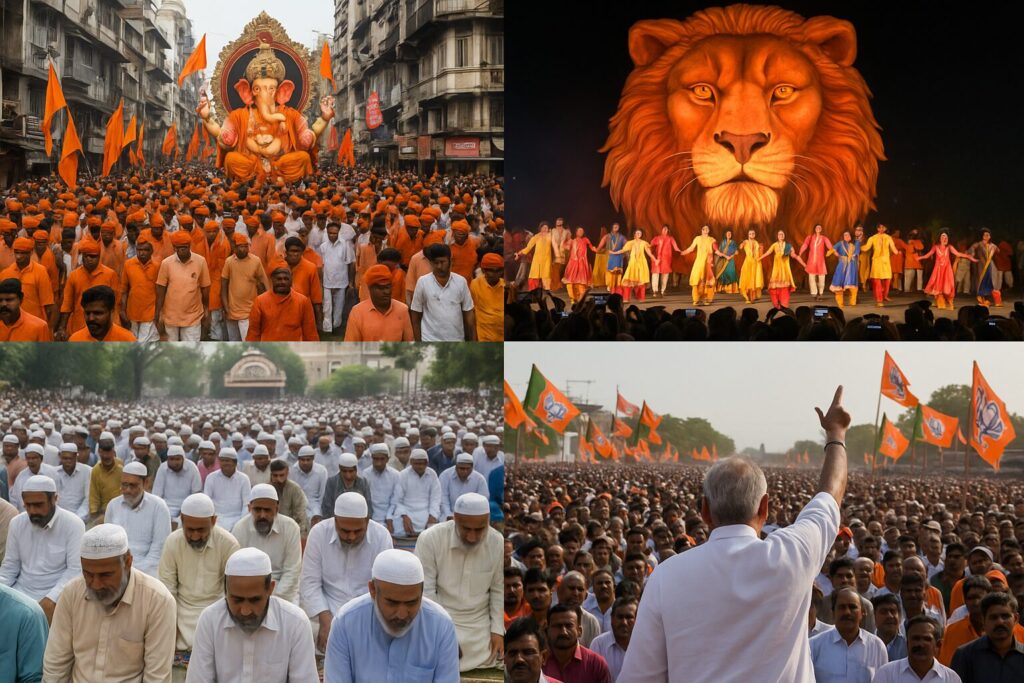
Conclusion
Social, cultural, and religious practices add meaning, richness, and continuity to human life. However, their day-to-day impacts—especially when they are unregulated or excessively invasive—can strain urban infrastructure, disrupt economic productivity, and hinder civic order.
India and many developing countries are still evolving mechanisms to balance tradition with civic order, ensuring festivals and processions enrich lives without imposing excessive costs on common citizens. Developed countries have generally institutionalized and regulated such events through urban planning, civic codes, and participatory governance.
Recommendations for India and Similar Countries
- Urban Planning Codes: Designated open spaces and noise regulation zones.
- Civic Permit Systems: Online transparent approval systems with fixed time/duration for public events.
- Public Education Campaigns: About noise pollution, waste, and responsible celebrations.
- Flexible Work/School Calendars: Centralized holiday approvals to avoid excessive closures.
- Technology Use: Real-time traffic, noise, and crowd management systems during events.
References
- Pew Research Center (2023) – Global Religious Landscape
- Ministry of Culture, Government of India – Festival Reports
- OECD (2022) – Productivity and Public Holidays Report
- World Bank – Urban Civic Infrastructure Index
- UN Habitat – Managing Urban Spaces in Developing Nations
- European Environment Agency – Noise Pollution Guidelines
- McKinsey Urban Labs – The Economics of Religious Festivals
- Harvard Kennedy School – Public Policy and Cultural Rights (2021)
- Local Indian Municipal Corporation Reports – Event Permits & Complaints